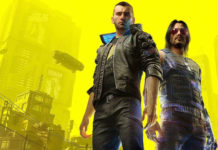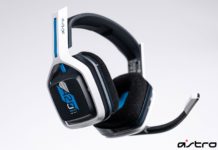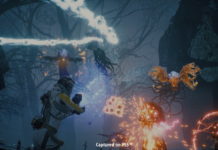The movie was not a huge success, but this new DS
game might give the franchise a little bit of respect. Any fans of the movie
will find a familiar environment, with a number of the characters each equipped
with a few witty vocal clips thrown in for some added comedy. Although the
graphics are a little plain and the sounds and music aren’t the greatest, and
the gameplay is a little repetitive, the controls at least have an original
feel. Either you’re a ping-pong fan, a fan of the franchise, or just someone who
is looking for a fresh new flavor, Balls of Fury on the DS should peak your
interest, at least for a little while.
Starting up the game, the user is prompted to
create a user profile. There is room on the cartridge for up to 4 profiles, so
sharing the game won’t be a problem. There are four different modes of play:
Exhibition Mode, Arcade Mode, Story Mode, and Multiplayer. Each mode has a pool
of 10 characters to select from, with the first six playable at the beginning.
As you advance through the game, you will unlock the ability to select from the
other four characters. Also, the game keeps a running tally of a few statistics
to make sure you are informed of your progress. Nothing spectacular, just an
added feature.
Exhibition Mode is a good place to go for
beginners. Put the difficulty setting on easy for a few games until you win two
or three in a row, then switch it over to the normal setting. The main
difference between the difficulties is that the opponents get a little bit more
longevity, increasing the number of rallies (hitting the ping-pong ball with a
paddle counts as a rally) you will need to match before you can earn your point.
Also the opponents start hitting more of those tricky shots that require some
quick reflexes to counter, but they are the same type of shots that you will
occasionally see in easy mode. In general, the highest difficulty just seems to
just add to my frustration because it’s the same game, only with more annoying
computer players.
If you’re all set with practicing, you may want
to jump in to the deeper modes of play. Arcade Mode and Story Mode are both
similar game types. Arcade Mode is a sequence of exhibition-style games against
randomly selected characters that get a little bit harder as you advance. Story
Mode is just that, the part of the game that follows the story of Balls of Fury.
Complete these modes to unlock trophies and extra unremarkable characters. My
personal favorite character, Feng, is available from the beginning, so I was
unmotivated to go through the entire game to unlock all of the rest.

The Story Mode follows the life of the movie’s
main character, Randy Daytona, as he goes through some crazy events. It starts
off at a table tennis championship game where Randy is representing the U.S., and
his gambling-addicted father bets his life on his son winning the match. After
losing the match, Feng (played in the movie by Christopher Walkin) cashes in on
Mr. Daytona’s bet and Randy never sees his father again. The ridiculous story
unfolds as Randy just barely makes it in to Feng’s tournament to get the chance
to finally avenge his father. If you’re looking for the Balls of Fury story, I
wouldn’t look here.
On easy setting with a little bit of experience,
both modes of play will be fairly easy up until the end. On normal, you’ll have a nice
challenge getting to the final match. Hard doesn’t seem to be much more of a
challenge, just more of the same stuff piled on a little heavier. The more you
play this game, the better you will get, but a game like this certainly has its
limits. Replay value here is fairly low unless you have some friends with a DS
and a wi-fi so you can play some casual multiplayer.
|
|
Gameplay: 6.8
Being one of the first ping-pong games for the DS, this game does have some
innovative controls. The ping-pong paddle is very easy to control with the
stylus, and once you get the hang of it, it becomes pretty easy to hit the ball
real close to where you want it. After a couple of games to get a feel for the
physics, you can start using the games spin controls (by pressing either right
or left on the d-pad) to give the ball an extra right or left spin, making it a
little bit harder to hit. Also, each character has at his/her disposal two
different special moves; one is a serve and one is a rally, and they are usable
by pressing up or down on the d-pad before hitting the ball. These moves are not
totally unique (at least two characters share each one of them), but they give
you a little bit of variety so the game isn’t just a completely redundant
back-and-forth ball-hitter. Without these power moves, it is possible the
computer would never be able to score on a human opponent.
Graphics: 3.0
The graphics in Balls of Fury are less than great. The most important part for
the gameplay, which is the ball going back and forth, looks pretty good, and it
flows really well between the two screens. Also, the avatar for each character
looks just like they do in the film. The characters themselves are pretty basic
renders with unexceptional movements, but again their faces look just like the
characters. There is something enjoyable about beating Feng (who looks just like
Christopher Walkin’s character) in an intense 1-on-1 match.
Sound: 2.4
Sound in this game is probably its weakest point. Throughout the game you are
listening to the same set of rock-and-roll themed songs, and eventually this
music may just drive you crazy. It might be worth it to just turn the music
volume down all the way after playing a couple of games. The characters also
each have some kind of a unique taunt that they will say to you while you play,
some of which you won’t be able to hear. Again, the important sound in terms of gameplay is the sound of the ping-pong ball hitting the paddle, and they did a
good enough job here that it sounds as good as it needs to.
Difficulty: Medium
The easy difficulty is really easy in the early levels of Arcade, and it
eventually feels more like normal. You still might lose some of the easy
difficulty games just because sometimes the computer will throw a few really
stupid, almost impossible shots at you, but for the most part it is quickly
master-able. The medium and hard difficulties are really similar in the early
stages of Arcade and Story, and hard doesn’t seem to be getting all that much
harder as you go. The opponents throw more and more super-fast-curvy ping pong
balls at you, but basically if you learn to stop one of them you can stop almost
all of them. Throughout the game on any difficulty, the special move shots will
be quite the challenge to stop. I’d say about 50% of the computer’s super shots
score them a point, whereas maybe 5% of their goals are scored legitimately
without this super-assistance.
Concept: 6.0
This game is one of the first ping-pong titles for the DS. There aren’t a ton of
controls, and there is nothing totally unique about the gameplay, but the
concept definitely gets the first-mover advantage. It is unfortunate that this
game got grouped in with an unsuccessful movie because on it’s own it could have
gotten a little bit more attention to detail.
Multiplayer: 6.3
The multiplayer part of this game may be the biggest reason to make the
purchase. It is a much better game to play with a friend because of the added
human-error element. The computer does not make any stupid mistakes that do not
seem planned in some way, so the single-player version vs. NPC’s will become
redundant. If you throw in a human opponent, who makes the same stupid mistakes
as you do, the playing field is much more level. Also, it doesn’t feel as bad to
lose to an actual person compared to losing to the computer, especially when
they are just unstoppable easy-mode NPC savants.
Overall: 4.9
Overall, this is an Ok game. It’s not going to be an award winner, and it might
not stay in your heart or mind for too long, but it is a fresh new game for the
DS. There could have been a few improvements made here and there to enhance the
total experience. For now, we certainly have a nice model if ever a developer
needs to satisfy another urge to make a Ping-Pong game.









